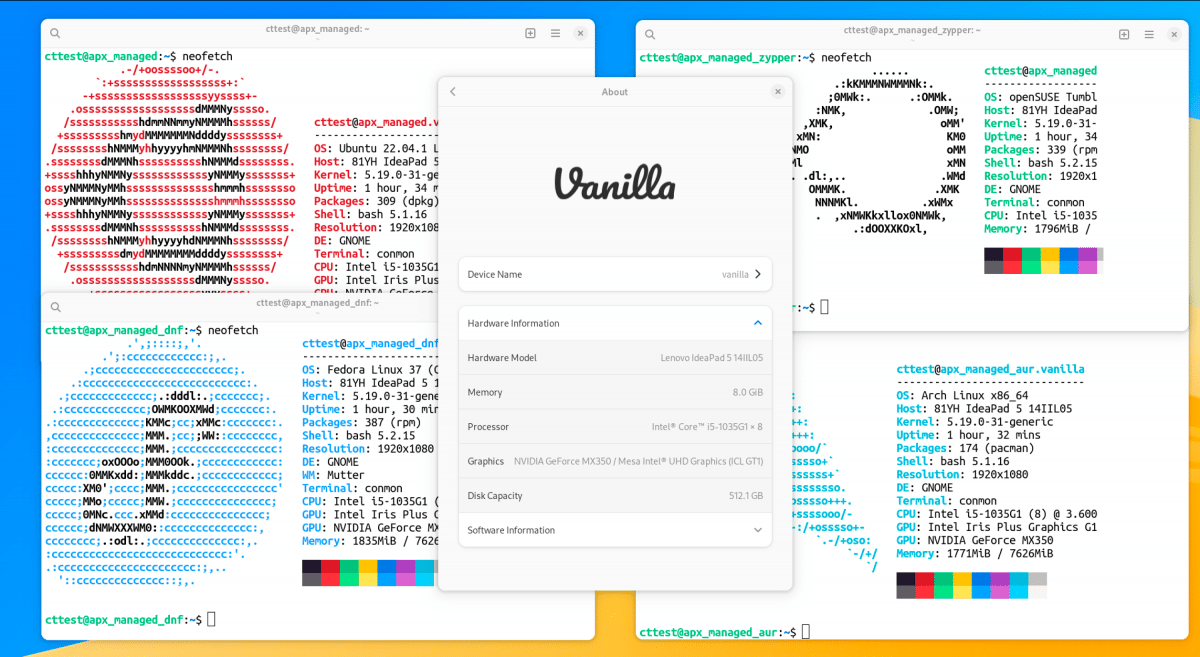Vanilla OS is an innovative Linux distribution that offers low-maintenance and beginner-friendly features in a single package. The distribution bundles important components such as a universal package manager, unchangeable system partitions, and transactional updates to provide a seamless user experience. In this article, we take a closer look at the first stable version of Vanilla OS to understand its unique features.
Installation
Vanilla OS comes with its own installer that primarily installs system files onto the disk. However, during our test, we found that the partitioning wizard only offers the option of installing the OS onto the entire hard disk or SSD. The developers have acknowledged this issue and are working towards fixing it. Once the system is set up, an assistant asks users which apps they want to add.
App Installation
Vanilla OS offers a wide range of graphical applications installed in the Flatpak container format directly from the Flathub repository. The developers have temporarily deactivated Canonical’s Snap, making AppImages the second choice after Flatpaks. Flatpak apps run in a sandbox and use more storage space, but have the advantage that all dependencies are included in the container. Vanilla OS does not pre-install a lot of software, and users must select the apps they need during the initial setup. Flatseal, installed on request, allows users to adjust the rights of Flatpak applications.
System Restore & Proprietary Drivers
During the initial setup, Vanilla OS offers to install Timeshift, which works similarly to System Restore on Windows or Time Machine on macOS. However, during our test, we found that saving and restoring snapshots did not work on our system, and we advise against it. As with Ubuntu, users can check the box to install proprietary drivers and audio and video codecs.
User Interface & Unchangeable System Partitions
Gnome fans will be delighted to know that Vanilla OS delivers the Gnome desktop unchanged. Vanilla OS uses an immutable Btrfs file system on the system partition coined “Unbreakable Linux.” This means the root partition is unchangeable, which makes the installation more stable and reproducible. However, Vanilla OS offers write permissions for the /home and /etc directories to enable users to complete work and use applications.
Package Manager & Containers
Vanilla OS uses the apx package manager to install software. Apx is a true all-rounder and gets software from the Ubuntu, Fedora, and Arch repositories, without touching the root file system. Instead, apx installs programs in managed operating system containers. For example, apx install htop installs htop from the jammy/main repository in an Ubuntu container. The Vanilla Control Center creates an overview of available and already initialized containers while listing applications installed with apx.
Conclusion
Vanilla OS delivers a unique user experience that bundles together several essential features for low-maintenance and beginner-friendly use. Despite a few minor glitches during our test, Vanilla OS offers a stable, reproducible, and secure operating system that requires minimal maintenance. With its focus on containerization, Vanilla OS opens up a vast variety of software choices and offers excellent compatibility with Ubuntu, Fedora, and Arch repositories.


